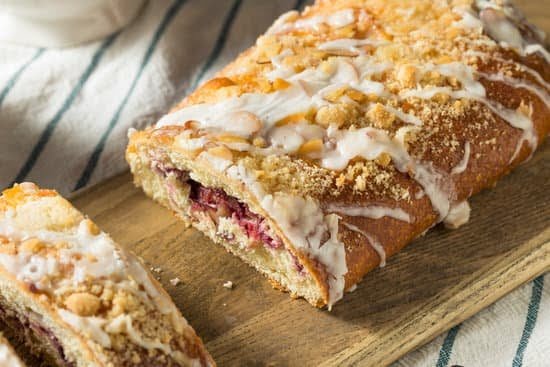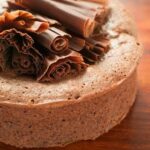When it comes to baking and decorating a cake, it’s crucial to pay attention to every step of the process. One important factor that often gets overlooked is the thawing of a frozen cake before decorating. The timing of when to set your frozen cake out to decorate can greatly impact the overall quality and success of your final creation.
In this article, we will delve into the importance of properly thawing a cake before decorating and highlight the key considerations in this process. We will explore why freezing cakes can be beneficial, as well as discuss the proper techniques for preparing and storing cakes for freezing. Furthermore, we will provide expert tips and recommendations on determining the ideal thawing time for your frozen cake.
Thawing a cake may seem like a simple task, but it requires careful attention and knowledge to achieve optimal results. Whether you’re a seasoned baker looking for some new insights or a beginner eager to learn the best practices for decorating a thawed cake, this article will guide you through each step of the process. So let’s dive in and discover how to set your frozen cake out at just the right time for decorating perfection.
Why Opt for Freezing Cakes
Freezing cakes can be a great option for anyone who wants to prepare a cake in advance or has leftovers from a previous event. There are several benefits to freezing cakes, but it is important to consider some factors before deciding to freeze your cake.
One of the main benefits of freezing cakes is that it allows you to prepare them in advance. This can be particularly helpful if you have a busy schedule or if you are planning a special event. By freezing the cake ahead of time, you can save yourself time and stress on the day of the event.
Additionally, freezing cakes can help enhance their flavor and texture. When a cake is frozen, the moisture in it turns into ice crystals, which helps keep the cake moist and tender when thawed.
However, there are some considerations to keep in mind when choosing to freeze a cake. First, not all types of cakes freeze well. Cakes with delicate fillings or decorations may not hold up as well in the freezer, so it is important to choose a recipe that is suitable for freezing.
Additionally, proper storage techniques are crucial to ensure that the cake retains its quality during freezing and thawing. The cake should be wrapped tightly in plastic wrap or placed in an airtight container before being stored in the freezer.
When considering whether or not to freeze your cake, it is important to plan ahead and consider the specific needs of your event. Freezing cakes can be a convenient and practical option, but it is essential to take into account factors such as the type of cake and proper storage techniques. By doing so, you can enjoy all the benefits that come with freezing cakes while avoiding any potential mishaps.
| Benefits | Considerations |
|---|---|
| – Preparation in advance | – Not all types of cakes freeze well |
| – Time and stress-saving | – Delicate fillings or decorations may not hold up well |
| – Enhanced flavor and texture | – Proper storage techniques are crucial |
Preparing the Cake for Freezing
Properly storing a cake before freezing is crucial to ensure that it maintains its moisture and flavor. By following the correct storage techniques, you can preserve the quality of your cake and make the thawing process easier. Here are some expert tips on how to prepare your cake for freezing:
- Allow the cake to cool completely: Before you start preparing your cake for freezing, make sure it has cooled down completely. This will prevent condensation from forming inside the packaging, which can lead to a soggy texture. You can even refrigerate the cake overnight before freezing it to make sure it is thoroughly cooled.
- Wrap the cake well: To protect your cake from freezer burn and maintain its freshness, wrap it tightly in several layers of plastic wrap or aluminum foil. Make sure there are no exposed areas that could become dry or develop ice crystals. For added protection, you can also place the wrapped cake in an airtight container or resealable plastic bag.
- Label and date: It’s important to label and date your frozen cakes so that you know exactly when they were prepared. Use a permanent marker to write the type of cake and the date on the packaging. This way, you can keep track of how long each cake has been stored and prioritize using them accordingly.
| Storage Techniques | Description |
|---|---|
| Cooling down completely | Allowing the cake to cool thoroughly before wrapping helps prevent condensation. |
| Tightly wrap with multiple layers | Using plastic wrap or aluminum foil, wrap the cake tightly to protect it from freezer burn. |
| Use airtight containers or bags | For added protection, place the wrapped cake in an airtight container or resealable plastic bag. |
| Label and date | Write the type of cake and the date on the packaging for easy identification and tracking. |
By following these storage techniques, you can ensure that your cake stays fresh and delicious during freezing. In the next section, we will explore how timing plays an important role in determining the ideal thawing time for your frozen cake.
Timing Matters
Thawing a frozen cake is a crucial step in the cake decorating process. It ensures that your cake is at the right temperature and consistency for optimal decorating conditions. However, it’s important to note that thawing time can vary depending on several factors, including the size of the cake and the method used for freezing.
The size of the cake plays a significant role in determining thawing time. Larger cakes will naturally take longer to thaw compared to smaller ones. As a general rule of thumb, you should allow for at least 2-3 hours of thawing time per pound of cake. So if you have a 5-pound cake, you’ll need to set it out to thaw for about 10-15 hours.
Aside from size, the method used for freezing your cake can also affect thawing time. If you’ve wrapped your cake tightly in plastic wrap and then placed it in an airtight container before freezing, it will take longer to thaw compared to a cake that has been only loosely covered with plastic wrap. The more insulation provided by multiple layers and secure packaging, the longer it will take for heat to penetrate through and thaw your cake.
To determine if your frozen cake has fully thawed, you can gently press your finger onto the surface of the cake. If it springs back without leaving an impression or feeling too firm, then it’s ready for decorating. However, if your finger leaves an indentation or the texture is still firm, you should allow more time for thawing.
| Factors | Thawing Time |
|---|---|
| Cake Size | 2-3 hours per pound |
| Method of Freezing | Varies (insulated packaging takes longer) |
The Thawing Process
The process of thawing a frozen cake is crucial to ensure that it is ready for decorating. Thawing the cake too quickly or unevenly can lead to a soggy or dry texture, which can impact the overall taste and appearance of the final product. To help you achieve the perfect thawed cake every time, follow this step-by-step guide:
- Transfer the frozen cake to the refrigerator: Place the wrapped or boxed frozen cake in the refrigerator at least 24 hours before you plan to decorate it. This slow thawing process allows for a gradual transition from frozen to room temperature, preventing any potential texture issues.
- Remove any wrapping or covering: Once fully thawed in the refrigerator, take the cake out and carefully remove any plastic wrap, foil, or parchment paper that was used during freezing. This step will allow for even air circulation and prevent condensation build-up on the surface of the cake.
- Let it sit at room temperature: After removing all covering from the cake, let it sit at room temperature for about 1-2 hours before beginning any decorating. This will further ensure that the cake reaches an ideal consistency for easy handling.
During this time, make sure to keep an eye on the cake to avoid over-thawing or drying out. If you notice that parts of your cake are still slightly frozen in certain areas, lightly cover those areas with a clean towel and leave it at room temperature until fully thawed.
To sum up:
- Transfer the frozen cake to the refrigerator at least 24 hours before decorating.
- Remove wrapping or covering once fully thawed in the refrigerator.
- Let it sit at room temperature for about 1-2 hours before beginning decoration.
By following these steps, you can thaw your frozen cake perfectly and create a smooth canvas for your decorating endeavors. Remember that patience is key during this process, as rushing it may result in undesirable outcomes.
Avoiding Mishaps
Thawing at Room Temperature
One common mistake to avoid when thawing a frozen cake is leaving it at room temperature. This can lead to uneven thawing and a soggy or mushy texture. It is important to remember that the outside of the cake will thaw faster than the center, so leaving it at room temperature can result in a partially frozen center.
Using Heat Sources
Another mistake to steer clear of is using heat sources such as microwaves or ovens to speed up the thawing process. While these methods may seem convenient, they can cause the cake to become dry and lose its moisture. Additionally, applying direct heat can lead to inconsistent thawing and even melting decorations on the cake.
Refreezing Thawed Cake
Refreezing a previously thawed cake is a big no-no. Once a cake has been fully thawed, it should be consumed or decorated immediately. Refreezing could compromise the quality and taste of the cake, as well as increase the risk of foodborne illnesses.
Not Allowing Enough Time
One mistake that many people make is not allowing enough time for their cake to thaw properly. This can result in an under-thawed cake that is still slightly frozen in parts. To ensure that your cake is fully thawed, it is recommended to allow it to sit in the refrigerator for at least 24 hours before decorating.
By avoiding these common mistakes during the thawing process, you can ensure that your frozen cake thaws evenly and retains its delicious taste and texture for decorating. Remember to follow proper thawing techniques and give your cake enough time to reach ideal decorating conditions before moving on to the next step.
Ensuring Optimal Decorating Conditions
Once your frozen cake is completely thawed and ready to be decorated, it is important to ensure that you have optimal decorating conditions. This will help you achieve the best results and create a visually appealing cake. There are several factors to consider before you start decorating your thawed cake.
- Temperature: The temperature of the room where you plan to decorate your cake plays a crucial role in achieving optimal results. It is recommended to work in a room that is cool, but not too cold. A temperature between 68-72 degrees Fahrenheit (20-22 degrees Celsius) works best as it allows you to work with buttercream or fondant without them becoming too soft or melting.
- Work Surface: Having a clean and stable work surface is essential for successful cake decoration. Make sure your work surface is clean, dry, and free from any debris that could contaminate your cake. A marble or granite countertop can help keep the temperature of your cake stable while working on it.
- Lighting: Adequate lighting is important for accurately assessing the colors and details of your cake during the decorating process. Natural light is ideal, so consider working near a window if possible. If natural light is not available, choose a well-lit area with bright, white lights that won’t cast any yellow or blue hues on your cake.
To create an optimal decorating environment, eliminate any distractions in the room and make sure you have all the necessary tools and decorations within reach before starting. By carefully considering these factors, you can set yourself up for success and ensure that your thawed cake will be beautifully decorated.
When to Set Frozen Cake Out to Decorate
Timing is crucial when it comes to setting a frozen cake out to decorate. By following expert tips and recommendations, you can ensure that your cake is at the optimal temperature for decorating, resulting in a beautiful and professional-looking final product.
One of the key factors to consider when determining when to set your frozen cake out is the size and density of the cake. Larger or denser cakes will take longer to thaw compared to smaller or lighter ones.
As a general rule of thumb, it is recommended to set your cake out at room temperature for approximately 2-3 hours per pound of cake. This allows for a gradual thawing process without compromising the texture or taste of the cake.
Another important consideration is the type of frosting or decoration you plan to use. If you are planning to use a buttercream frosting, it is best to set your cake out slightly earlier than if you were using a fondant or ganache covering. Buttercream tends to soften quicker at room temperature, so allowing extra time for thawing would prevent any mishaps during decorating.
To ensure an even thawing process, it is advisable to remove any layers of wrapping from your frozen cake before setting it out. Placing the unwrapped cake on a wire rack can help air circulation and promote faster thawing. It’s crucial not to rush this process by applying heat sources such as microwaves or hot water, as they can result in uneven thawing and potential damage to the structure of the cake.
In summary, proper timing is essential when setting a frozen cake out for decoration. Taking into account factors such as the size and density of the cake, type of frosting used, and allowing for an even thawing process will guarantee that your finished product looks as good as it tastes.
Decoration Techniques
When it comes to decorating a thawed cake, there are several tried and true techniques that can help you achieve professional-looking results. Whether you’re a baking aficionado or a novice decorator, these tips and tricks will ensure that your cake not only tastes delicious but also looks stunning.
Preliminary Preparation
Before diving into the actual decoration process, it’s important to properly prepare your thawed cake. Start by trimming any uneven edges or crusty parts to ensure a clean canvas for decorating. If your cake has risen unevenly during the baking process, consider leveling it with a sharp serrated knife or cake leveler. This will create a stable base for your decorations and prevent any wobbling or sliding.
Another essential step before decorating is applying a crumb coat to the cake. This thin layer of frosting acts as a sealant, preventing crumbs from mixing with the final layer of frosting. To achieve a smooth crumb coat, use an offset spatula or icing smoother to spread a thin layer of frosting over the entire cake. Once the crumb coat is in place, refrigerate the cake for about 15-30 minutes to allow it to set.
Frosting and Icing Techniques
When it comes to frosting and icing your thawed cake, there are various techniques you can try depending on the style you want to achieve.
One popular technique is “smooth buttercream,” which involves creating an impeccably smooth finish on the surface of the cake using buttercream frosting. To achieve this look, start by adding a generous amount of frosting onto the top of the chilled and crumb-coated cake. Using an offset spatula or icing smoother, spread the frosting evenly across the top and sides of the cake, ensuring smooth and even strokes.
If you prefer a more textured look, you can try “ruffle piping.” This technique involves using a piping bag fitted with a petal or ruffle tip to create delicate frills around the edges of the cake. Begin by applying a thin layer of frosting to the crumb-coated cake, then use the piping bag to create ruffled lines along the sides of the cake.
Adding Decorative Elements
Once you have the base frosting or icing in place, it’s time to add decorative elements to make your thawed cake truly unique. One simple and effective way to enhance the look of your cake is by using edible decorations such as fresh fruits, flowers, or chocolate shavings. These can be placed strategically on top of the frosting or sprinkled around the base of the cake for an elegant touch.
You can also consider using different piping techniques to add more intricate designs. For example, try using a star tip to create rosettes or swirls along the sides or top of your thawed cake. Another option is employing a writing tip and colored icing to add personalized messages or intricate patterns.
Overall, decorating a thawed cake requires careful attention to detail and some creative flair. By following these tips and tricks, you’ll be able to transform your frozen cake into a visually stunning masterpiece that will impress both friends and family.
Final Touches and Finishing Flourish
When it comes to decorating a cake, the final touches are what really make it stand out. These finishing flourishes can take your cake from ordinary to extraordinary, creating a stunning and memorable centerpiece for any occasion. In this section, we will explore some expert tips and techniques for adding those final touches that will truly elevate your thawed cake.
Choosing the Right Frosting
The type of frosting you use can greatly impact the overall look and taste of your cake. For a smooth and professional finish, buttercream or ganache are popular choices. Buttercream is versatile and easy to work with, allowing for intricate designs and piping details. Ganache, on the other hand, provides a glossy appearance that adds elegance to any cake.
If you prefer a lighter and creamier texture, whipped cream or cream cheese frosting can be excellent options. Whipped cream gives a soft and fluffy effect, while cream cheese frosting offers a tangy flavor that complements many cake flavors.
Piping Techniques
Piping is an art form in itself when it comes to cake decoration. It allows you to add intricate designs, create borders, or write personalized messages on your cake. To achieve clean lines and professional-looking results, it’s essential to practice proper piping techniques.
Start by selecting the right tip for the design you want to achieve; there are various tips available such as round tips for writing or outlining and star tips for creating rosettes or shells. Practice pressure control by squeezing gently but steadily as you pipe to ensure even consistency in your design.
Adding Decorative Elements
To give your thawed cake that extra wow factor, consider adding decorative elements such as edible flowers, chocolate curls, or sprinkles. These small details can make a big difference in the overall appearance of your cake. For a more sophisticated look, consider using fondant to create delicate accents like bows or flowers.
Remember to consider the theme and occasion when choosing decorative elements. For example, for a birthday cake, you could use themed cake toppers or edible images of the celebrant’s favorite characters.
Presentation Tips
Once your cake is decorated to perfection, it’s important to present it in an appealing way. Placing your cake on a beautiful cake stand or decorative platter can add elegance and elevate the presentation. Consider using additional props such as fresh flowers, fruit slices, or even a personalized cake topper to enhance the overall visual effect.
Remember that lighting plays a crucial role in highlighting all the intricate details of your beautifully decorated cake. Ensure that the area where you display your cake is well-lit, either with natural sunlight or carefully positioned spotlights.
Taking your time and paying attention to these final touches and finishing flourishes will ensure that your thawed cake becomes a show-stopping masterpiece that will delight both your eyes and taste buds. So let your creative spirit soar and have fun exploring different techniques and designs as you take your cake decorating skills to the next level.
Bonus
Now that you have learned all about the proper thawing and decorating techniques for frozen cakes, it’s time to delve into some creative ideas for designing and presenting your masterpiece. Adding unique touches to your cake can make it visually appealing and allow you to showcase your creativity. Here are a few suggestions to inspire you:
- Theme-based Decorations: Consider the occasion or the recipient’s interests when planning the design of your cake. You can choose a specific theme such as superheroes, unicorns, or sports, and incorporate elements that match the theme using edible decorations like fondant figurines or piped buttercream designs.
- Texture and Layers: Create visual interest by incorporating different textures and layers in your cake design. For example, you can add chocolate shavings or cookie crumbles on top of a smooth frosting surface to create contrast. Use various widths of piping tips for different buttercream patterns and finishes.
- Edible Flowers and Fruits: Top off your cake with beautiful edible flowers or fruits to give it a fresh and vibrant look. Not only do they add color but they also provide a delightful visual element that complements the overall design.
- Personalized Touches: Add a personal touch by including customized messages or monograms on your cake. You can use stencils, edible ink markers, or even create templates with fondant to achieve professional-looking results.
Remember, the most important thing is to have fun while decorating your thawed cake. Don’t be afraid to experiment with different techniques and designs – after all, it’s an opportunity to let your creativity shine. With these tips in mind, go ahead and wow your family and friends with an impeccable frozen cake presentation that tastes just as good as it looks.
In conclusion, properly thawing a frozen cake is vital for achieving optimal decorating conditions. By following the step-by-step guide provided earlier in this article, you can ensure that your cake thaws evenly and retains its moisture and flavor. Once your cake is thawed, the possibilities for decoration are endless.
Whether you choose to incorporate a specific theme, play with textures and layers, or adorn it with edible flowers and personalized touches, the key is to let your creativity flow. Remember to have fun in the process and infuse your own unique style into the design. With these expert tips and recommendations, as well as some creative ideas for frozen cake design and presentation, you are ready to take your cake decorating skills to the next level.
Frequently Asked Questions
How long to take cake out of freezer before decorating?
It is generally recommended to take the cake out of the freezer and let it thaw for about 2-3 hours before decorating. Thawing the cake at room temperature allows it to soften evenly without any hot or cold spots, which can affect the texture and appearance of the cake.
This time frame may vary depending on the size and thickness of the cake, so it’s essential to keep an eye on the cake while thawing and ensure it reaches a suitable temperature for decorating.
Is it OK to freeze cake before decorating?
Yes, it is perfectly acceptable to freeze a cake before decorating it. Freezing cakes has several advantages, such as extending their shelf life, making them easier to handle, and allowing for more efficient time management when planning special occasions or events.
Freezing cakes helps in locking in moisture, preserving flavor, and reducing crumbiness during handling. However, proper packaging is crucial to prevent freezer burn or absorbing unwanted odors from other food items in the freezer.
Is it better to freeze or refrigerate cake before decorating?
When it comes to whether it’s better to refrigerate or freeze a cake before decorating, freezing is often preferred over refrigerating. While refrigerating can help maintain freshness for a short period before decorating, it might result in drying out the cake’s exterior and altering its texture over time.
On the other hand, freezing provides better moisture retention and prevents staleness as compared to refrigeration because cold temperatures slow down chemical reactions that lead to spoilage. Additionally, freezing is beneficial because you can decorate the cake at your convenience without worrying about shorter shelf life compared to refrigerated cakes.

Welcome to our cake decorating blog! My name is Destiny Flores, and I am the proud owner of a cake decorating business named Cake Karma. Our mission is to provide delicious, beautiful cakes for all occasions. We specialize in creating custom cakes that are tailored specifically to each customer’s individual needs and tastes.





